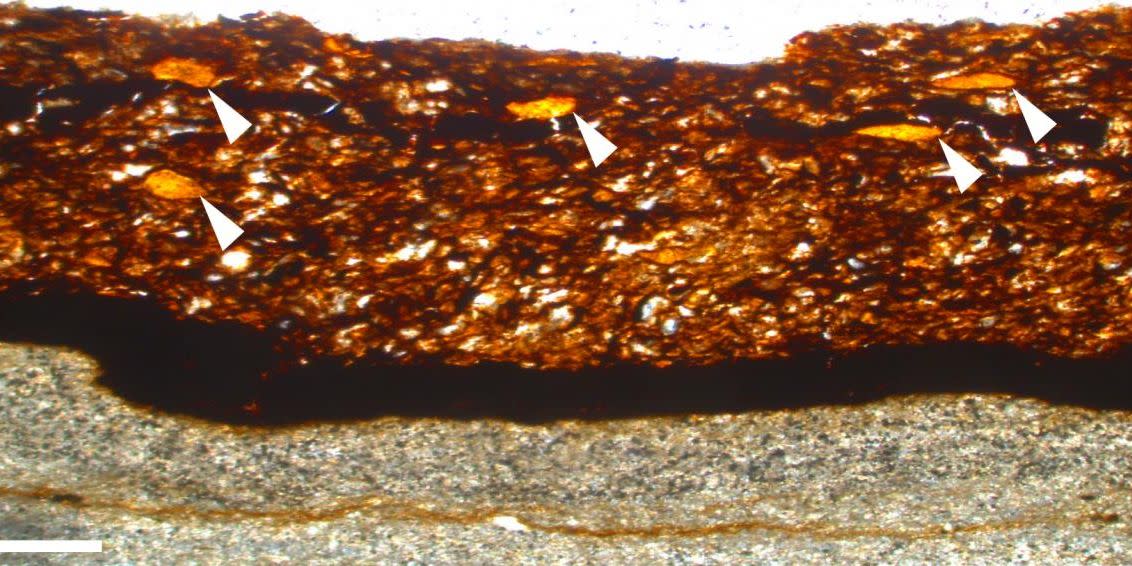Prehistoric Plant Gum First Ever to Survive Fossilization Process

The world’s first fossilized plant gum has been discovered by a student at the University of Portsmouth.
The gum has endured for millions of years—an impressive feat considering it has been exposed to water twice during formation and is itself water-soluble.
For the first time ever, plant gum—a resin similar to amber—has been found within a fossilized Welwitschiophyllum plant. Emily Roberts, a Ph.D candidate at the University of Portsmouth, discovered the gum in leaves that are 110 million years old and came from Brazil’s Crato Formation, a natural geologic structure from the early Cretaceous period full of fossils.
Roberts noticed small bands dispersed throughout the ancient leaves she was studying and upon further examination, determined that the bands were actually plant gum.
The find is exciting because it disproves the notion that plant gums were unable to undergo fossilization due to their soluble nature. Even though plant gums share some characteristics with resins, their chemical makeup is different. Resins, such as amber, are able to endure through several millennia while gums typically dissolve over time.
Additionally, the plant gum has survived quite the journey, making it through water exposure twice and the general “weathering of the Crato Formation,” according to a paper published in Scientific Reports.
Welwitschia, a rare plant only found in the Namibian desert and southern Angola, is descended from the Welwitschiophyllum plant and even produces a gum similar to that of its prehistoric ancestor.
“Welwitschia is one of life’s survivors, thriving in one of the harshest environments on earth for over 120 million years,” says David Martill, paper co-author and professor at the University of Portsmouth.
But what does this say about preservation for other substances that we previously considered lost to time?
“This new discovery…has opened our eyes to the fact that other plant chemicals may also be preserved—we can no longer just make assumptions.” Roberts adds that she and her team were “astonished” to have found something that until then, seemed “impossible.”
“We show for the first time that a water-soluble plant exudate has been preserved in the fossil record, potentially allowing us to recognize further biomolecules thought to be lost,” says Roberts.
Now, all we have to do is find them.
You Might Also Like

